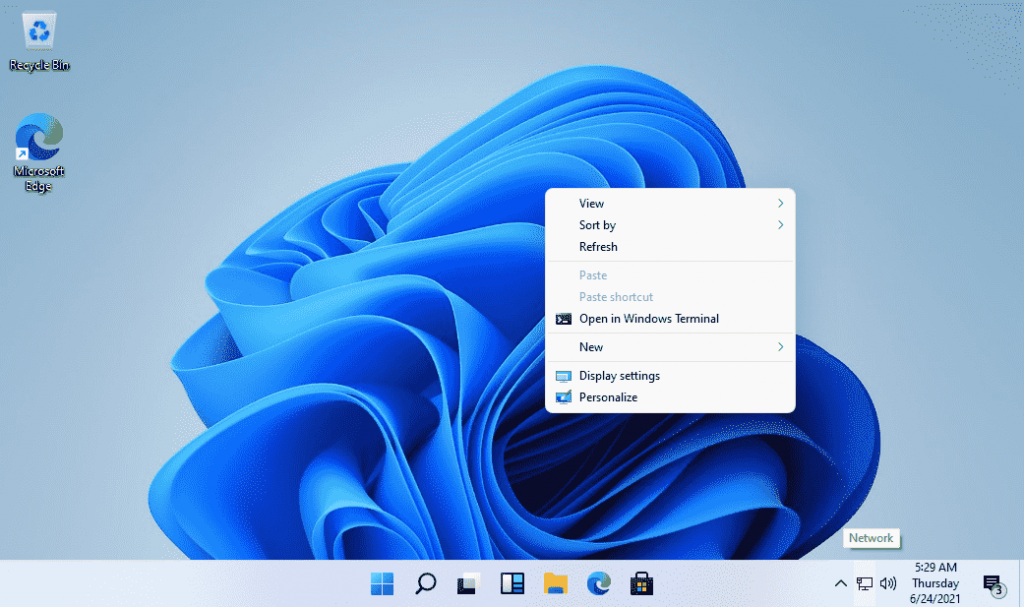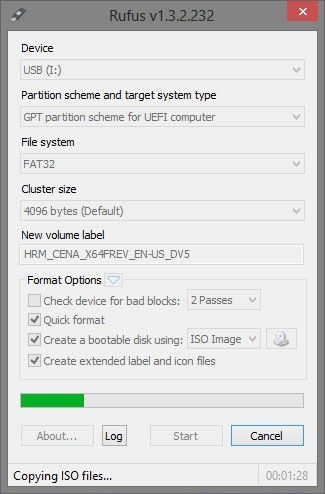

- #RUFUS CREATE BOOTABLE USB IMAGE INSTALL#
- #RUFUS CREATE BOOTABLE USB IMAGE DRIVER#
- #RUFUS CREATE BOOTABLE USB IMAGE WINDOWS 10#
- #RUFUS CREATE BOOTABLE USB IMAGE ISO#
- #RUFUS CREATE BOOTABLE USB IMAGE WINDOWS#
Therefore, you can safely disable Secure Boot, as Rufus advertises, and then re-enable it later on. So, it makes no difference whether Secure Boot was enabled or disable for the initial USB boot, because the system will have rebooted in between, and it's only from that second boot that the Secure Boot status becomes relevant.
#RUFUS CREATE BOOTABLE USB IMAGE WINDOWS#

#RUFUS CREATE BOOTABLE USB IMAGE INSTALL#
Typically the Windows install process is as follows: Despite what you may have heard, that is not an issue, and Windows does not require Secure Boot to be enabled when it's for the USB media. You can temporarily disable Secure Boot for the first boot, and then re-enable it on reboot, after Windows setup has copied the initial files. We are releasing new versions on regular basis, while adding features, fixing bugs and improving overall image support). Rufus dev here (and no, Rufus is not "old and outdated" as some people here want to pretend.
#RUFUS CREATE BOOTABLE USB IMAGE ISO#
In the Easy2Boot MPI ToolKit download, there is a 'SplitWinISO' utility that will automatically create a new ISO which contains split wim files - from this you can create your FAT32 USB drive. If the \sources\install.wim or install.esd is larger than 4GB you will have to 'split' it.
#RUFUS CREATE BOOTABLE USB IMAGE WINDOWS 10#
However, Mok Manager does not always run on many systems.Į2B allows you to secure boot to grubfm\agFM grub2 by using a signed shim boot file, however recent Windows 10 KB updates have added a blacklist entry into the UEFI BIOS DBx database which blacklists this shim - so you may need to go into the BIOS and clear the DBx blacklist before you can secure boot to E2B.Īs said before, the simplest and most compatible way to secure boot is to simply extract the files from inside the Windows ISO to a FAT32 USB drive. Ventoy allows you to run MOK Manager on first secure boot and you can 'whitelist' the unsigned grub EFI boot file into the BIOS using a certificate token file, thus making the boot file 'accepted' by that BIOS.
#RUFUS CREATE BOOTABLE USB IMAGE DRIVER#
If your USB drive is the NTFS+FAT type, then only UEFI BIOses with the extra NTFS driver will be able to secure boot from the UEFI files on the NTFS partition 1 because the rufus grub2 boot files and NTFS driver on the FAT partition 2 are not signed. If your USB drive is pure FAT/FAT32 then there will never be any problems.

Many UEFI BIOSes can only UEFI-boot from FAT partitions, however some UEFI BIOSes also have an additional NTFS driver added into their BIOS and these BIOSes can UEFI-boot from both FAT and NTFS partitions. The Rufus utility can make a single FAT32 partition which will be UEFI-bootable or you can get it to make an NTFS+FAT dual partition drive. Am I misunderstanding all of this somehow? should i trust that my bootable USB Win10 installers are working correctly and securely? or have I somehow made a big mistake leaving Secure Boot enabled while installing Win10 from a Rufus-created USB drive? The reason I posted is because, to date, I have not had any issues using these Rufus-created bootable USB drives with Secure Boot enabled on HP EliteBook laptops so far. I'm assuming that means Rufus is licensed under GPLv3?

Rufus says it's Microsoft's fault for not allowing anything licensed under GPLv3 to be signed for secure boot (see link below). Within Rufus, I have chosen "Target System = UEFI" but Rufus is telling me I will have to disable Secure Boot in order to use this USB drive/bootloader. We will be installing Win10 on our HP EliteBook 840 laptops which all are configured in the BIOS settings to use Secure Boot. I am creating a new bootable Win10 installer with Rufus, our Windows 10 Enterprise ISO (from Microsoft Volume Licensing) and an USB drive.


 0 kommentar(er)
0 kommentar(er)
